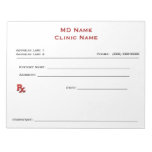Most medical practice owners and operators commit a cardinal sin of marketing when brainstorming what they want from their next website – to focus inward on the desires of their practice growth (looking aesthetically pleasing, to look larger than they are, etc.) instead of focusing on the functionality that their patients want.
As patients become ever demanding consumers with a myriad of choices, it’s worth discussing the top five functions that we see becoming popular with our rapidly growing patient base at Kareo.
Mobile Ready
Over half of the traffic we see come to the DoctorBase Profiles come from mobile devices, and this is a trend we see increasing each year. Forcing patients to pinch and resize their screens, wait more than a few seconds for pages to load, or asking patients to squint to see a phone number are all mistakes that can be avoided with a new website technology called Responsive Design.
Responsively designed websites look fantastic on desktop-based browsers, but rearrange themselves automatically to look and feel as if they were built for smartphones when viewed on mobile devices.
In fact, this April Google started penalizing websites that were not mobile-friendly by deprecating them in the search results. Their rationale was that the search giant looks for the best user experience for its visitors, and since over 55% of their traffic in the U.S. and other key markets now come from mobile-based searches, it was a logical move in your patients’ best interests.
Imbedded Patient Portal
The failure of most patient portal initiatives are only partly based on patient indifference. As consumers, many of the best intended technologies never achieve what techies dub “Product UX Fit.” Meaning the way the product is designed doesn’t meet the needs of the way users want to consume such services.
Many legacy patient portals were buried behind obscure URLs and forced patients through a cumbersome registration process just to log in. By having the patient portal imbedded as part of the practice’s website, not only can patients find the portal easier, it becomes a seamless experience unifying the website and the portal as a singular experience.
While most medical organizations struggled to hit the original Meaningful Use Stage II requirements of 5% patient portal registration, simply having a patient portal that’s visible on the website increases the brand and marketing value of the website.
Interactive Functionality
Smart marketers understand the difference between the statements, “What can my website do for me?” and “What can my website do for my clients?”
The latter question is critical to unlocking the power of high consumer engagement, building a local brand, and achieving successful web marketing metrics.
The two most popular interactive functions we see patients use are the ability to book an appointment online and the ability to send a secure message – especially if they can accomplish these functions on their mobile devices.
Experienced digital marketers call popular functions on a website or mobile app “Calls to Action,” and it’s key to have such buttons as “Message Us Securely” or “Book an Appointment Online” be clear, boldly colored and prominent as part of the website’s design. Remember, consumers strongly dislike tiny buttons and tiny links on their mobile devices!
Transparency
I try to have lunch or dinner with doctors at least twice (if not more) a week to stay in touch with the needs and observations of independent practice owners. At one particular lunch in San Francisco, I had informed one of my clients that we were starting to hire more employees from Yelp and he went on a tirade about how useless Yelp was, and how misguided patients were for using it to research healthcare options.
So I asked him, “do you or your wife use it to find decent restaurants here in the Bay Area?”
He pursed his lips in thought for a moment and relented, “Yes. Yes, I do but my wife uses it far more than I do.”
The age of the testimonial, or placing beautiful stock photography of perfectly smiling patients have given way to the review economy. Even though it is riddled with faults and potentials for abuse, consumers have spoken in favor of this new paradigm and they will often choose a 3.5 star doctor than a doctor with no reviews.
Placing a link to 3rd party reviews on a practice’s website not only uplifts the brand of that practice, it greatly increases the “Conversion Rate,” (the percentage of website visitors that actually go on to book an appointment).
Reminders
I still recall being often annoyed by my “nagging” mother, but when she would go on vacation for a week or so at a time, I would think, “Why isn’t she here to help take care of me?”
I think many of my doctors would agree that patients are, in some sense, like children that never grew up to take full account and charge of their healthcare journey.
This largely explains why text and email based reminders for patients to show up for their appointments, to schedule regular appointments, and to act on scheduled healthcare actions (take your pills, exercise, etc.) have become so popular with patients.
A patient engagement solution tied to your website not only allows the brand of that practice to seem like a top tier, technically advanced organization, it generates revenues by reducing no-show rates and increasing medical adherence (especially important in a growing age of value-based payments).
In summary, building an independent practice’s website can allow doctors to effectively compete with the largest of incumbent players in any local area, but it requires that healthcare operators “get out of the box” and start giving patients what they want – convenience, interactivity and transparency.




No comments:
Post a Comment